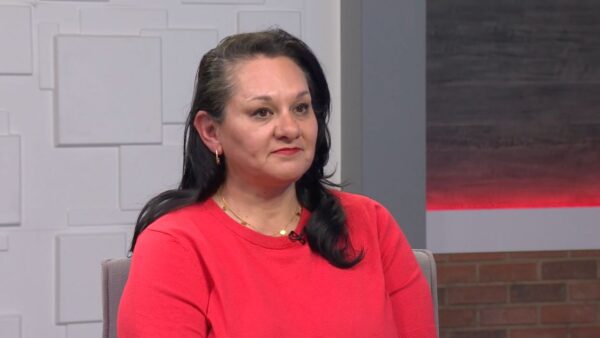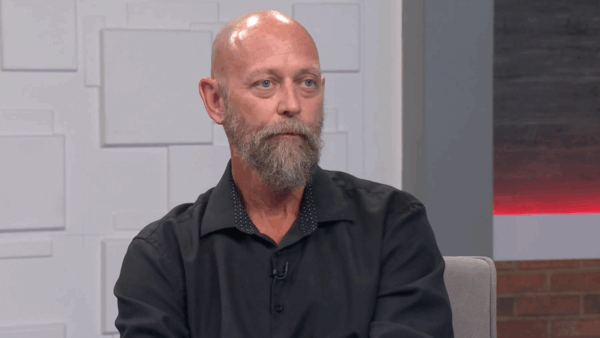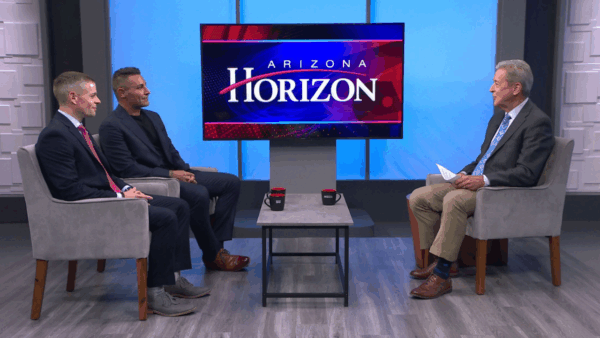New Environmental Protection Agency regulations on haze have some Arizona leaders saying that the regulations could lead to higher energy costs and a loss of jobs. State lawmakers want to allow states to set air standard regulations. Sandy Bahr of the Grand Canyon Chapter of the Sierra Club and Arizona Attorney General Tom Horne will discuss the issue of haze regulation.
Ted Simons: Arizona attorney general Tom Horne yesterday filed another challenge to federal regulations regarding haze Over Arizona. This latest action asks the circuit court of appeals To prevent the implementation Of EPA rules affecting Arizona coal-fired power plants. Joining us now to explain his opposition to the EPA rules Is state attorney general Tom Horne. And here to speak in support Of the EPA regulations is Sandy Bahr of the Sierra club's Grand Canyon chapter. Good to see you both here.
Tom Horne: Sandy Bahr: Thank you.
Ted Simons: Motion for the stay here in the 9th cirucuit? Why? --
Tom Horne: So that utilities don't have to spend money that they don't already have to spend--
Ted Simons: What do you want the courts to consider as far as the merits of the case?
Tom Horne: The big thing is cost versus benefit. Cost $ million to the utilities, which means all of our rates will go up substantially. Benefits, none. The -- the visibility is measured in deciviews, the lowest that I have seen, discernible to the eye, is one deciview, the EPA standard. A study showing the difference between their system and the federal system would be 0.5 deciviews -- human beings would not be able to see the difference that would cost over 500 $ million.
Ted Simons: What does the EPA want? What are they calling for.
Sandy Bahr: First of all, the provisions that EPS is finally enforcing go back about years. They're part of the clean air act. And the provisions in the clean air act called for cleaning up regional haze around our pristine national parks, monuments, wilderness areas, places like the Grand Canyon, and so what they're saying is that these power plants need to install modern pollution control equipment, equipment that has been installed on power plants across the country, including in Arizona. And clean up the pollution, which does affect haze at these national parks. But also in reducing this pollution, which is nitrogen oxide, primarily, it will help improve public health as well. And that is one of the things that often gets lost in the discussion about clean-up of these facilities.
Ted Simons: What is wrong with those kind of regulations?
Tom Horne: Well, as far as the haze or the view goes, I would be -- if it made the air cleaner. As I pointed out, it is not PERCEPTIBLE to the human eye. EPA had a standard -- they reduced that to 15 micro grams per cubic meter. Here there is no evidence as to any quantity here. What they have said is they claim it would be help, but for the purpose of this action, we are not authorized to consider the health benefits and we have not done so. There has been no showing that there will be any measurable improvement to health benefits. It may be that the amount of pollutant is below the standard set for the country now of 12 micrograms per cubic meter--
I've heard the number like 300$ million a year in health costs-- where does the number come from?
Sandy Bahr: That's correct. There have been several economic analysis, including by the EPA but also independent economic analysis and the -- first of all, the cost that -- as far as the rates go, increase in rates, utilities are really exaggerating. That is clear from the economic analysis. And also the health care benefits are some things that were evaluated by independent entities. Clean air task force, for example, looked at how many lives would be saved, looked at asthma attacks, bronchitis, emergency room visits. And then the total cost, clean air health cost force looked at that as well, and it was about 314$ million in health costs for these three plants alone. So, there are health benefits-- you can't argue that reducing nitrogen oxide is not going to help public health. It contributes to smog. That is one of the most dangerous pollutants that we have. And, you know, ask people who live in and around some of these plants that have suffered from the pollution whether they think it is not an issue.
Ted Simons: But it sounds like Arizona has adopted standards. Arizona has its own plan. What is wrong with that plan?
Sandy Bahr: First of all, after 35 years, EPA finally decided to implement this and so there is plenty of time for people to know it was coming. But then, the department of environmental quality was over three years late in submitting a plan, and their plan was weak. Their plan did not address regional haze. It did not require modern pollution control equipment, and that would really show benefits relative to regional haze. It is discernible. The EPA had to look at five factors. The EPA did do an economic analysis to make sure that this was something that was practical. And that is why they went forward with it.
Ted Simons: The idea that Arizona put itself in this position because they were late and came in weak.
Tom Horne: On the contrary. Actually the Arizona plan was filed and the EPA had certain amount of time to object and they didn't object. The Arizona plan took effect by operation of law. Then the EPA went into court and entered into a consent judgment with a friendly plaintiff, which involved some conspiracy that is being looked at to require some different deadlines, and they have come back and said something -- two things missing in the Arizona plan. Very minor things. Disagreed with our cost estimate because we included some things that they do not have in their form. The things that we included clearly are costs, but they say their form bring uniformity to the country-- the guidelines say that you should have accurate costs, not necessarily uniform costs. So, actually as far as timing goes, EPA was late to object and Arizona's plan was adopted by operation of law because the EPA failed to object.
Ted Simons: What do you make of that?
Sandy Bahr: I want to address using a word like conspiracy, so inappropriate coming from the attorney general. Obviously there was no conspiracy. We had to push EPA to implement this, right? There was litigation that was filed to get them to move forward with implementing the clean air act. Something, again, that has been 35 years in the making. So, I think that, you know, using that term is inappropriate. The other thing I want to mention is the state is acting on behalf of the big utilities on this, and, you know, I think that they should be acting on the behalf of clean air and the citizens of the state. Especially the department of environmental quality. They're supposed to be the lead agency for clean air, and, yet, they submitted a weak plan, and now they're -- now they're filing lawsuits along with the utilities to keep us from getting more clean-up and for improving visibility and improving public health.
Ted Simons: What about the argument if these regulations go into effect, I believe -- hurt rate payers, lose power all together, rural areas -- some plants might close down and jobs lost in the process. A lot of ramifications there. How do you respond?
Sandy Bahr: Well, it is easy to throw out those kinds of comments when there is -- there is no one to do an analysis. There has been an economic, independent economic analysis relative to these facilities, and the claims that they're making are overblown. If they really thought that they were going to have to shut them down, they would have -- they could have demonstrated that in their comments, and EPA would have had to respond to that. EPA did have to look at the economic analysis, and they determined that this was economically viable. Other facilities have done it. Why can't these facilities?
Tom Horne: Well, you know, first of all, I wants to point out the state takes position that comports with the facts. Fact is ther is no quantification of a health benefit. Another important quote from the EPA, we do not believe it is necessary or appropriate to quantify the extent of the health benefit because we are not relying upon health effects in the promulgation of this rule. If there was a health benefit, they would have quantified it. We are dealing with limits below what they say is a safe limit. There are no health benefits. With respect to the costs, costs were calculated at $558 million. The state plan cost between 237 and 445$ per ton of material removed. Federal plan, ten times that, 2,405$ to 3,331$, per ton for no benefit. It is a -- they are talking about imposing enormous costs for no benefit. It is the absolute typical irrational government action imposing huge costs on people for no benefit.
Ted Simons: Why do you think they're doing it?
Tom Horne: I think there is an agenda to do away with coal. A lot of power plants will have to shut down all over the country if these kind of regulations go into effect. In -- Cochise County, they believe their utility would go down -- when I was there, they told me they were looking at 200$ per person added to the electric bill, unsustainable.
Sandy Bahr: That agenda started in when these provisions -- the agenda is to clean up some of our national icons, and it does make a difference, and the number he is using is not the EPA number. The other thing, Grand Canyon, petrified forest -- these places, they contribute to our economy. Contribute to jobs. Millions of dollars, and it is not-- it is not just those national parks, but other, national monument -- a lot of visitors, a lot to the economy of our area and there are discernible health benefits. Because EPA focused on regional haze does not mean there are not health benefits from reducing nitrogen oxide. Common sense tells you there are health benefits from reducing it.
Tom Horne: If there were health benefits, they would have quantified them. They specifically said they will not quantify them, and the reason, whatever they are talking about is below what they determined to be a safe level with a margin for error under the regulations.
Ted Simons: Very quickly, is it worth the price, though, big price, is it worth it to clean up the air?
Tom Horne: If the air was dirty and this would clean it up, absolutely. We are talking about a huge price for no benefit. It is not discernible to the human eye. It's like a caricature of irrational government conduct --
Ted Simons: Very, very quickly, is it worth it to lose jobs and have rates go sky high in order to get this EPA regulation?
Sandy Bahr: Neither one of those are going to happen. Their claims are incorrect. Rates are not going to go sky high because of it and you can have a lot of jobs created by cleaning up these plants and transitioning to clean, renewable energy and energy efficiency --
Tom Horne: The standards just came out very recently. Over the course of 30 years, Arizona has been working closely with the EPA to clean up the air. We want clean air.
Ted Simons: We all want clean air. We have to stop it there. Good discussion. Good to have you both here. Thank you for joining us.
Tom Horne: Sandy Bahr: Thank you.
Sandy Bahr:Grand Canyon Chapter, Sierra Club; Tom Horne:Attorney General, Arizona;























